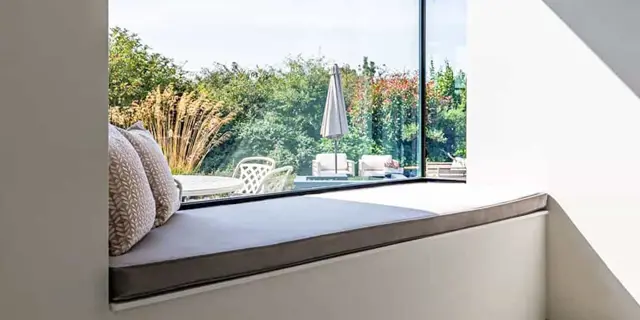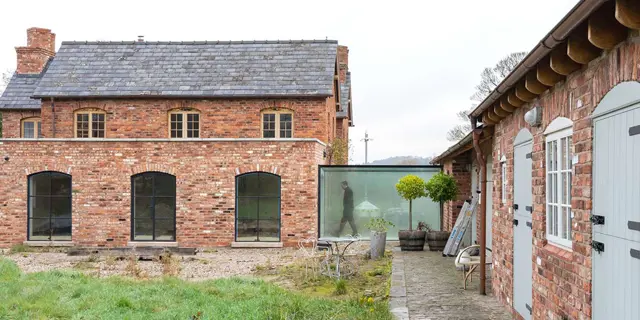What is structural glazing?
As the glazing industry evolves new technology is evolving along with it. With advances in both machinery, tooling and glass manufacturing the possibilities are growing at an unprecedented pace. Glass pane sizes are getting bigger and bigger whilst U values are getting lower enabling more and more glass in places of traditional brick and timber. Read our blog to find out what is possible and how these advancements in technology have created a new product (Structural Glass).


Impact on Architectural Design
Historically architects have been constrained by the materials at there disposal and windows and doors where no exception. Limited by the size and shape of the products on the market often designs would be based around the products. Structural glazing has changes this approach and we as the manufacturer/installer are able to work of almost any design concept using our structural glazing system to design and install glass structures to almost any shape or style imaginable.
- Indoor, outdoor flow: with the popularisation of bifold doors some years ago we seen a huge increase in the term "indoor, outdoor flow" this was something that many of our customer then and now wanted to achieve. With structural glazing we are able to take this much further thinned sight lines and larger panes of glass mean we able to further enhance the reality of the indoor, outdoor flow breaking down the barrier of indoor and outdoor separation.
- Enhanced architectural design: when we enter a building there are those rare times when our breath is taken away. A stunning view or a magical cantilever which looks almost like its playing a trick on our minds are a couple of examples that come to mind. It's in these moments that we think of the architect and what a wonderful mind that has been at play to create such a vision. Structural glass is further enhancing the wizardry that is now coming into play with architects creativity in residential buildings. Our structural glazing systems give engineers the tools to specify the most creative ideas that architects can imagine. Structural glass is behind may architectural marvels such as the well known Sky Pool in Battersea, London by Architecture Studio HAL, a swimming pool that appears to be floating high in the air between two buildings.
- Natural Light: simply put more glass equals more light which is often the scope when design a new or re-designing an existing space. Our structural glazing system does just that larger glass panels for just about any application windows, doors, roof lights, glass links and even entire glass rooms.
Products and Applications
To satisfy the most discerning homeowners and architects we have developed a range of structural glazing products that are all manufactured bespoke to suit the project perfectly.
- Frameless Windows: Our frameless windows can be install with no visible frame where no opening sash is required or alternatively with an extremely thin sash for those requiring an opening element. Panel sizes are almost unrestricted within residential environments as we are now able to manufacture panels larger than many buildings.
- Glass Links: our glass links are a method of connecting to separate buildings with an all glass tunnel. These are the go to choice for renovations of traditional building where a more modern building is to be linked. With such a contemporary look they are really suited to any building style and add the wow factor to any project.
- Oriel Windows: Our Oriel windows are often large in size and protrude from the façade with glass on all 4 sides creating a floating box of glass often used as a window seat internally.
- Glass Corners: similar to Oriel windows our glass corners are an all glass 3 sided box that are a great solution to opening up a corner of your home. With a completely uninterrupted view of the outside of your home as well as the sky there is something quite magical about installing a glass corner and not to mention a great talking point when hosting guests.
- Glass Extensions: taking it one step further we are now able to offer entire extensions manufactured from glass thanks to enhanced energy efficiency and structural properties of modern glass manufacturing.
- Bespoke Projects: If you have a desire to do something different and create a one of project with structural glass our teams is always on hand to help make this a reality. We have installed structural glass on many of our projects including bespoke large flat roof lights, glass corridors, glass walls, up and over eves rooflights and more. Some of our installations teams have a background in commercial glazing where structural glass is more prevalent.


Conclusion:
Structural glazing is the new kid on the block in terms of glass products in residential projects and is constantly gaining in popularity. If you have a roof, wall or entire roof you would like to be constructed from glass this is now possible and we have the experience and knowledge to help. Glass choice has always been at the forefront of architectural design and that has never been more true that it is today. With glass panels becoming bigger, frames becoming smaller and structural supports now being made out of glass we are no longer bound by the limits of this material. The landscape of home design is constantly changing and this is just one of the ways in which we are able to design and experience our homes without the restrictions of smaller glass panels and chunky frames of yesteryear.


